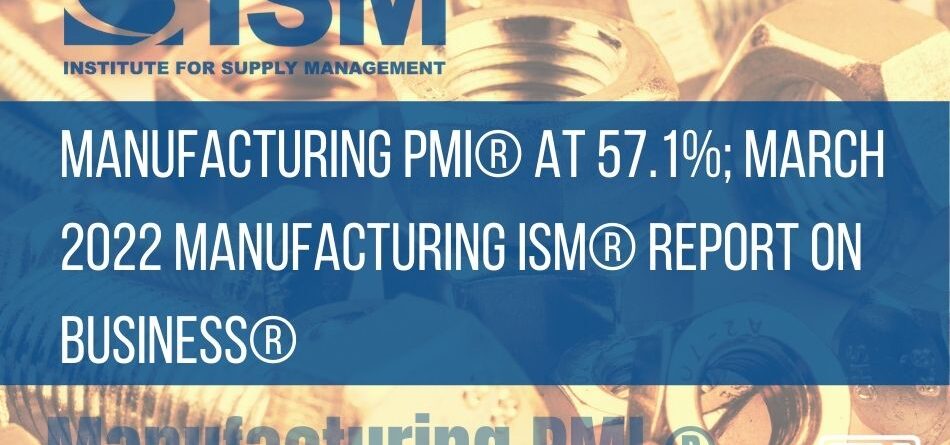New Orders, Production and Employment Growing; Supplier Deliveries Slowing at a Slower Rate; Backlog Growing; Raw Materials Inventories Growing; Customers’ Inventories Too Low; Prices Increasing; Exports and Imports Growing
, /PRNewswire/ — Economic activity in the manufacturing sector grew in March, with the overall economy achieving a 22nd consecutive month of growth, say the nation’s supply executives in the latest Manufacturing ISM® Report On Business®.
The report was issued today by Timothy R. Fiore, CPSM, C.P.M., Chair of the Institute for Supply Management® (ISM®) Manufacturing Business Survey Committee:
“The March Manufacturing PMI® registered 57.1 percent, a decrease of 1.5 percentage points from the February reading of 58.6 percent. This figure indicates expansion in the overall economy for the 22nd month in a row after a contraction in April and May 2020. This is the lowest reading since September 2020 (55.4 percent). The New Orders Index registered 53.8 percent, down 7.9 percentage points compared to the February reading of 61.7 percent. The Production Index reading of 54.5 percent is a 4-percentage point decrease compared to February’s figure of 58.5 percent. The Prices Index registered 87.1 percent, up 11.5 percentage points compared to the February figure of 75.6 percent. The Backlog of Orders Index registered 60 percent, 5 percentage points lower than the February reading of 65 percent. The Employment Index figure of 56.3 percent is 3.4 percentage points higher than the 52.9 percent recorded in February. The Supplier Deliveries Index registered 65.4 percent, a decrease of 0.7 percentage point compared to the February figure of 66.1 percent. The Inventories Index registered 55.5 percent, 1.9 percentage points higher than the February reading of 53.6 percent. The New Export Orders Index reading of 53.2 percent is down 3.9 percentage points compared to February’s figure of 57.1 percent. The Imports Index registered 51.8 percent, a 3.6-percentage point decrease from the February reading of 55.4 percent.”
Fiore continues, “The U.S. manufacturing sector remains in a demand-driven, supply chain-constrained environment. In March, progress was made to solve the labor shortage problems at all tiers of the supply chain, which will result in improved factory throughput and supplier deliveries. Panelists reported lower rates of quits and early retirements compared to previous months, as well as improving internal and supplier labor positions. March brought back increasing rates of price expansion, due primarily to instability in global energy markets. Suppliers are not waiting to experience the full impacts of price increases before negotiating with their customers. Panel sentiment remained strongly optimistic regarding demand, with six positive growth comments for every cautious comment, down from February’s ratio of 12-to-1. Demand expanded, with the (1) New Orders Index remaining in growth territory, supported by weaker growth of new export orders, (2) Customers’ Inventories Index remaining at a very low level and (3) Backlog of Orders Index continuing in strong growth territory. Consumption (measured by the Production and Employment indexes) grew during the period, though at a slower rate, with a combined minus-0.6-percentage point change to the Manufacturing PMI® calculation. The Employment Index expanded for a seventh straight month; panelists indicate their ability to hire continues to improve, to a greater degree than in February. Challenges with turnover (quits and retirements) and resulting backfilling continue to plague panelists’ efforts to adequately staff their organizations, but to a lesser extent compared to February. Amid signs of staffing and supplier delivery improvements, production expanded at disappointing levels, likely due to timing issues. Inputs — expressed as supplier deliveries, inventories, and imports — continued to constrain production expansion. The Supplier Deliveries Index again slowed, but at a slightly slower rate in March, while the Inventories Index increased at a slightly faster rate and the Imports Index grew at a slower rate. The Prices Index increased for the 22nd consecutive month, at a dramatically higher rate compared to February.
“Five of the six biggest manufacturing industries — Food, Beverage & Tobacco Products; Machinery; Transportation Equipment; Chemical Products; and Computer & Electronic Products — registered moderate-to-strong growth in March.
“Manufacturing performed well for the 22nd straight month, with demand registering slower month-over-month growth (likely due to extended lead times) and consumption softening slightly (due to labor force improvement). Omicron impacts are being felt by overseas partners, and the impact to the manufacturing community is a potential headwind,” says Fiore.
Fifteen manufacturing industries reported growth in March, in the following order: Apparel, Leather & Allied Products; Furniture & Related Products; Food, Beverage & Tobacco Products; Electrical Equipment, Appliances & Components; Miscellaneous Manufacturing; Machinery; Textile Mills; Transportation Equipment; Fabricated Metal Products; Paper Products; Chemical Products; Computer & Electronic Products; Nonmetallic Mineral Products; Primary Metals; and Plastics & Rubber Products. The two industries reporting a decrease in March compared to February are: Wood Products; and Petroleum & Coal Products.
WHAT RESPONDENTS ARE SAYING
- “No letup yet in supply chain challenges, especially electronic components. Relying more and more on the broker market.” [Computer & Electronic Products]
- “Customer orders are brisk in the face of significant price increases, while we continue to struggle with inbound supplier service and raw material availability issues.” [Chemical Products]
- “Generally speaking, the business environment is slowly improving for aerospace component manufacturers. Supply chain disruptions and still-extending lead times continue to keep purchasing busy. This further causes reevaluation of the current year’s business plan and cost assumptions.” [Transportation Equipment]
- “Overall business conditions are challenging in both domestic and international transportation. The Russian invasion of Ukraine has created uncertainty in the grain markets, causing upward pricing pressure. In addition, inflationary pressures across all categories have made it challenging to manage cost and profitability.” [Food, Beverage & Tobacco Products]
- “Prices are increasing on steel and steel products after a slight decrease from highs last month. Transportation costs are going up significantly with the increase in fuel prices.” [Machinery]
- “Backlog continues to be strong as we ship delinquent orders resulting from COVID-19 slowdowns.” [Fabricated Metal Products]
- “Demand continues to be strong. Backlog is still increasing — currently at about three months of production. Availability of purchased material continues to constrain production, causing the increased backlog.” [Electrical Equipment, Appliances & Components]
- “Business continues to be strong, with incoming sales higher but still combating labor and material issues like availability and inflation. Still determining impact of the Russian invasion of Ukraine.” [Furniture & Related Products]
- “The supply situation is getting worse, with lead times extending over 12 months, material not available, and suppliers not quoting or taking orders. Prices on the rise daily.” [Miscellaneous Manufacturing]
- “Supply chain is still unstable. While we have seen improvements, there are still a lot of issues that have yet to be resolved.” [Primary Metals]
MANUFACTURING AT A GLANCEMarch 2022 |
Index | Series Index Mar | Series Index Feb | PercentagePointChange | Direction | Rate of Change | Trend* (Months) |
Manufacturing PMI® | 57.1 | 58.6 | -1.5 | Growing | Slower | 22 |
New Orders | 53.8 | 61.7 | -7.9 | Growing | Slower | 22 |
Production | 54.5 | 58.5 | -4.0 | Growing | Slower | 22 |
Employment | 56.3 | 52.9 | +3.4 | Growing | Faster | 7 |
Supplier Deliveries | 65.4 | 66.1 | -0.7 | Slowing | Slower | 73 |
Inventories | 55.5 | 53.6 | +1.9 | Growing | Faster | 8 |
Customers’ Inventories | 34.1 | 31.8 | +2.3 | Too Low | Slower | 66 |
Prices | 87.1 | 75.6 | +11.5 | Increasing | Faster | 22 |
Backlog of Orders | 60.0 | 65.0 | -5.0 | Growing | Slower | 21 |
New Export Orders | 53.2 | 57.1 | -3.9 | Growing | Slower | 21 |
Imports | 51.8 | 55.4 | -3.6 | Growing | Slower | 5 |
OVERALL ECONOMY | Growing | Slower | 22 |
Manufacturing Sector | Growing | Slower | 22 |
Manufacturing ISM® Report On Business® data is seasonally adjusted for the New Orders, Production, Employment and Inventories indexes.
*Number of months moving in current direction.
COMMODITIES REPORTED UP/DOWN IN PRICE AND IN SHORT SUPPLY
Commodities Up in Price
Adhesives and Paint (4); Aluminum (22); Aluminum Products (3); Brass; Cable Assemblies (2); Caustic Soda; Copper (3); Copper Products; Corrugate (2); Corrugated Packaging (17); Crude Oil (3); Diesel Fuel (15); Electrical Components (16); Electronic Components (16); Energy; Fasteners; Freight (17); Hydraulic Components; Labor — Temporary (11); Logistics Services; Lubricants; Lumber (4); Natural Gas (9); Nickel; Packaging Supplies (16); Pallets (2); Paper; Paper Products (3); Pigments; Plastic Resins (3); Plywood; Polypropylene; Precious Metals; Rubber; Rubber Based Products (8); Semiconductors (14); Solvents (2); Soy Based Products (3); Steel* (20); Steel — Hot Rolled; Steel — Scrap; Steel — Stainless (17); Steel Products* (19); Titanium; and Zinc Compounds (3).
Commodities Down in PriceSteel* (5).
Commodities in Short SupplyAluminum (5); Aluminum Products; Cable Assemblies; Caustic Soda; Electrical Components (18); Electronic Components (16); Fabricated Metal Products; Food Oils (2); Freight; Labor — Temporary (11); Lumber; Nickel; Ocean Freight; Packaging Materials; Plastic Resins — Other (13); Power Supplies; Printed Circuit Board Assemblies (3); Programmable Logic Controllers; Resin Based Products; Rubber Based Products (2); Semiconductors (16); Steel (2); Steel — Stainless; and Wire — Copper.
Note: The number of consecutive months the commodity is listed is indicated after each item.
*Indicates both up and down in price.
MARCH 2022 MANUFACTURING INDEX SUMMARIES
Manufacturing PMI®
Manufacturing grew in March, as the Manufacturing PMI® registered 57.1 percent, 1.5 percentage points lower than the February reading of 58.6 percent. This is the lowest reading since September 2020, when the composite index registered 55.4 percent. “The Manufacturing PMI® continued to indicate strong sector expansion and U.S. economic growth in March. All five subindexes that directly factor into the Manufacturing PMI® were in growth territory. Five of the six biggest manufacturing industries — Food, Beverage & Tobacco Products; Machinery; Transportation Equipment; Chemical Products; and Computer & Electronic Products — registered moderate-to-strong growth in March. The New Orders and Production indexes remained in expansion territory. The Supplier Deliveries Index softened slightly, and the Inventories Index increased, indicating easing of supply chain congestion. All 10 of the subindexes were positive for the period; a reading of ‘too low’ for the Customers’ Inventories Index is considered a positive for future production,” says Fiore. A reading above 50 percent indicates that the manufacturing economy is generally expanding; below 50 percent indicates that it is generally contracting.
A Manufacturing PMI® above 48.7 percent, over a period of time, generally indicates an expansion of the overall economy. Therefore, the March Manufacturing PMI® indicates the overall economy grew in March for the 22nd consecutive month following contraction in April and May 2020. “The past relationship between the Manufacturing PMI® and the overall economy indicates that the Manufacturing PMI® for March (57.1 percent) corresponds to a 2.9-percent increase in real gross domestic product (GDP) on an annualized basis,” says Fiore.
THE LAST 12 MONTHS
Month | ManufacturingPMI® | | Month | ManufacturingPMI® |
Mar 2022 | 57.1 | | Sep 2021 | 60.5 |
Feb 2022 | 58.6 | | Aug 2021 | 59.7 |
Jan 2022 | 57.6 | | Jul 2021 | 59.9 |
Dec 2021 | 58.8 | | Jun 2021 | 60.9 |
Nov 2021 | 60.6 | | May 2021 | 61.6 |
Oct 2021 | 60.8 | | Apr 2021 | 60.6 |
Average for 12 months – 59.7 High – 61.6 Low – 57.1 |
New OrdersISM®‘s New Orders Index registered 53.8 percent in March, a decrease of 7.9 percentage points compared to the 61.7 percent reported in February. This indicates that new orders grew for the 22nd consecutive month. While the New Orders Index remains in growth territory, the month-over-month decrease is the largest since a 15.3-percentage point drop in April 2020. “Five of the six largest manufacturing sectors increased new orders at moderate-to-strong levels: Food, Beverage & Tobacco Products; Transportation Equipment; Chemical Products; Computer & Electronic Products; and Machinery. Price instability, softening lead times and panelists’ order books being full resulted in a pause in new order rates. Backlog and customer inventories remain at very encouraging levels, indicating that demand remains strong in spite of this month’s slowing in new order expansion,” says Fiore. A New Orders Index above 52.9 percent, over time, is generally consistent with an increase in the Census Bureau’s series on manufacturing orders (in constant 2000 dollars).
Of the 18 manufacturing industries, 13 reported growth in new orders in March, in the following order: Apparel, Leather & Allied Products; Food, Beverage & Tobacco Products; Miscellaneous Manufacturing; Textile Mills; Electrical Equipment, Appliances & Components; Transportation Equipment; Paper Products; Chemical Products; Fabricated Metal Products; Furniture & Related Products; Computer & Electronic Products; Plastics & Rubber Products; and Machinery. The only industry reporting a decline in new orders in March is Petroleum & Coal Products.
New Orders | %Higher | %Same | %Lower | Net | Index |
Mar 2022 | 28.2 | 60.4 | 11.4 | +16.8 | 53.8 |
Feb 2022 | 32.5 | 61.4 | 6.1 | +26.4 | 61.7 |
Jan 2022 | 25.0 | 60.5 | 14.5 | +10.5 | 57.9 |
Dec 2021 | 24.6 | 64.6 | 10.8 | +13.8 | 61.0 |
ProductionThe Production Index registered 54.5 percent in March, 4 percentage points lower than the February reading of 58.5 percent, indicating growth for the 22nd consecutive month. “Of the top six industries, five — Food, Beverage & Tobacco Products; Transportation Equipment; Machinery; Chemical Products; and Computer & Electronic Products — expanded in March. Demand remains strong: Labor and material availability continue to improve, but factories are still struggling to hit optimum output rates,” says Fiore. An index above 52.4 percent, over time, is generally consistent with an increase in the Federal Reserve Board’s Industrial Production figures.
The 11 industries reporting growth in production during the month of March — listed in order — are: Apparel, Leather & Allied Products; Food, Beverage & Tobacco Products; Miscellaneous Manufacturing; Textile Mills; Transportation Equipment; Fabricated Metal Products; Electrical Equipment, Appliances & Components; Furniture & Related Products; Machinery; Chemical Products; and Computer & Electronic Products. The four industries reporting a decrease in March are: Paper Products; Primary Metals; Wood Products; and Plastics & Rubber Products.
Production | %Higher | %Same | %Lower | Net | Index |
Mar 2022 | 25.7 | 62.3 | 12.0 | +13.7 | 54.5 |
Feb 2022 | 27.5 | 61.8 | 10.7 | +16.8 | 58.5 |
Jan 2022 | 21.9 | 65.7 | 12.4 | +9.5 | 57.8 |
Dec 2021 | 25.6 | 57.0 | 17.4 | +8.2 | 59.4 |
EmploymentISM®‘s Employment Index registered 56.3 percent in March, 3.4 percentage points above the February reading of 52.9 percent. “The index reported a seventh consecutive month of expansion. Of the six big manufacturing sectors, four (Transportation Equipment; Food, Beverage & Tobacco Products; Machinery; and Computer & Electronic Products) expanded. Survey panelists’ companies are still struggling to meet labor management plans, but there were signs of improvement compared to February: A larger share of comments (12 percent in March, up from 4 percent in February) noted greater hiring ease. An overwhelming majority of panelists again indicate their companies are increasing head counts or attempting to, as 85 percent of Employment Index comments were hiring focused. Among those respondents, 28 percent expressed difficulty in filling positions, down from 34 percent in February. Although turnover rates remained elevated (30 percent of comments cited backfills and retirements, a decrease from 38 percent in February), there were indications of hiring improvement and a potential slowing in quits. April will provide better clarity,” says Fiore. An Employment Index above 50.5 percent, over time, is generally consistent with an increase in the Bureau of Labor Statistics (BLS) data on manufacturing employment.
Of 18 manufacturing industries, 10 industries reported employment growth in March, in the following order: Apparel, Leather & Allied Products; Furniture & Related Products; Electrical Equipment, Appliances & Components; Transportation Equipment; Food, Beverage & Tobacco Products; Fabricated Metal Products; Machinery; Paper Products; Miscellaneous Manufacturing; and Computer & Electronic Products. The four industries reporting a decrease in employment in March are: Textile Mills; Wood Products; Primary Metals; and Plastics & Rubber Products.
Employment | %Higher | %Same | %Lower | Net | Index |
Mar 2022 | 24.4 | 65.2 | 10.4 | +14.0 | 56.3 |
Feb 2022 | 21.6 | 62.4 | 16.0 | +5.6 | 52.9 |
Jan 2022 | 19.2 | 65.7 | 15.1 | +4.1 | 54.5 |
Dec 2021 | 15.5 | 72.2 | 12.3 | +3.2 | 53.9 |
Supplier Deliveries†The delivery performance of suppliers to manufacturing organizations was slower in March, as the Supplier Deliveries Index registered 65.4 percent, 0.7 percentage point lower than the 66.1 percent reported in February. Of the six top manufacturing industries, five (Machinery; Computer & Electronic Products; Chemical Products; Food, Beverage & Tobacco Products; and Transportation Equipment) reported slowing deliveries. “Deliveries slowed at a slightly slower rate compared to the previous month. The index continues to reflect suppliers’ difficulties in meeting demand from panelists’ companies. Supplier labor issues are improving, according to panelists’ comments, and transportation networks are beginning to demonstrate more flexibility, which should support improvement in the index in the second quarter (Q2),” says Fiore. (For more data on lead times, see the Buying Policy section of this report.) A reading below 50 percent indicates faster deliveries, while a reading above 50 percent indicates slower deliveries.
Fifteen of 18 industries reported slower supplier deliveries in March, in the following order: Apparel, Leather & Allied Products; Paper Products; Textile Mills; Machinery; Furniture & Related Products; Nonmetallic Mineral Products; Plastics & Rubber Products; Primary Metals; Fabricated Metal Products; Computer & Electronic Products; Chemical Products; Miscellaneous Manufacturing; Food, Beverage & Tobacco Products; Electrical Equipment, Appliances & Components; and Transportation Equipment. The only industry reporting faster supplier deliveries in March as compared to February is Wood Products.
Supplier Deliveries | %Slower | %Same | %Faster | Net | Index |
Mar 2022 | 34.8 | 61.2 | 4.0 | +30.8 | 65.4 |
Feb 2022 | 39.0 | 54.2 | 6.8 | +32.2 | 66.1 |
Jan 2022 | 34.4 | 60.4 | 5.2 | +29.2 | 64.6 |
Dec 2021 | 34.7 | 60.5 | 4.8 | +29.9 | 64.9 |
InventoriesThe Inventories Index registered 55.5 percent in March, 1.9 percentage points higher than the 53.6 percent reported for February. “Manufacturing inventories expanded at a faster rate compared to February and are again climbing. Continuing part shortages are evident in (1) increased receipts of products from suppliers and (2) expansion of work-in-process inventories to manage absorption. Manufacturing inventories will continue to expand through the first half of 2022, as these conditions persist in Q2,” says Fiore. An Inventories Index greater than 44.4 percent, over time, is generally consistent with expansion in the Bureau of Economic Analysis (BEA) figures on overall manufacturing inventories (in chained 2000 dollars).
The 14 industries reporting higher inventories in March — in the following order — are: Apparel, Leather & Allied Products; Furniture & Related Products; Electrical Equipment, Appliances & Components; Textile Mills; Machinery; Nonmetallic Mineral Products; Paper Products; Primary Metals; Chemical Products; Miscellaneous Manufacturing; Food, Beverage & Tobacco Products; Computer & Electronic Products; Transportation Equipment; and Fabricated Metal Products. Only Plastics & Rubber Products reported contracting inventories in March.
Inventories | %Higher | %Same | %Lower | Net | Index |
Mar 2022 | 24.5 | 63.6 | 11.9 | +12.6 | 55.5 |
Feb 2022 | 23.4 | 63.3 | 13.3 | +10.1 | 53.6 |
Jan 2022 | 21.8 | 62.7 | 15.5 | +6.3 | 53.2 |
Dec 2021 | 21.6 | 61.7 | 16.7 | +4.9 | 54.6 |
Customers’ Inventories†ISM®‘s Customers’ Inventories Index registered 34.1 percent in March, 2.3 percentage points higher than the 31.8 percent reported for February, indicating that customers’ inventory levels were considered too low. “Customers’ inventories are too low for the 66th consecutive month, a positive for future production growth. For 20 straight months, the Customers’ Inventories Index has been at historically low levels,” says Fiore.
No industries reported customers’ inventories as too high in March. The 11 industries reporting customers’ inventories as too low during March — listed in order — are: Paper Products; Transportation Equipment; Miscellaneous Manufacturing; Fabricated Metal Products; Plastics & Rubber Products; Machinery; Primary Metals; Computer & Electronic Products; Chemical Products; Food, Beverage & Tobacco Products; and Electrical Equipment, Appliances & Components.
Customers’ Inventories | % Reporting | %Too High | %About Right | %Too Low | Net | Index |
Mar 2022 | 69 | 7.3 | 53.6 | 39.1 | -31.8 | 34.1 |
Feb 2022 | 76 | 8.5 | 46.7 | 44.8 | -36.3 | 31.8 |
Jan 2022 | 74 | 8.6 | 48.9 | 42.5 | -33.9 | 33.0 |
Dec 2021 | 77 | 8.7 | 46.1 | 45.2 | -36.5 | 31.7 |
Prices†
The ISM® Prices Index registered 87.1 percent, up 11.5 percentage points compared to the February reading of 75.6 percent, indicating raw materials prices increased for the 22nd consecutive month, at a notably faster rate in March. This is the biggest month-over-month increase since a 12.2-percentage point gain (to 77.6 percent) in December 2020; the Prices Index has since exceeded 70 percent in 15 out of 16 months. The index has been above 60 percent for 19 months in a row. “Aluminum, packaging materials, copper, electrical and electronic components, petroleum products, vegetable oils, lumber and paper products, freight, rubber based products, and stainless steel remain at elevated prices, thanks to product scarcity and high demand. A reversal of steel product price declines and the dramatic increase in energy costs has led to a resumption of overall prices growth, reversing what appeared to be a post-omicron softening,” says Fiore. A Prices Index above 52.6 percent, over time, is generally consistent with an increase in the Bureau of Labor Statistics (BLS) Producer Price Index for Intermediate Materials.
In March, all 18 industries reported paying increased prices for raw materials, in the following order: Apparel, Leather & Allied Products; Nonmetallic Mineral Products; Paper Products; Printing & Related Support Activities; Textile Mills; Primary Metals; Transportation Equipment; Machinery; Plastics & Rubber Products; Chemical Products; Miscellaneous Manufacturing; Computer & Electronic Products; Fabricated Metal Products; Food, Beverage & Tobacco Products; Electrical Equipment, Appliances & Components; Furniture & Related Products; Petroleum & Coal Products; and Wood Products.
Prices | %Higher | %Same | %Lower | Net | Index |
Mar 2022 | 75.1 | 24.0 | 0.9 | +74.2 | 87.1 |
Feb 2022 | 56.2 | 38.8 | 5.0 | +51.2 | 75.6 |
Jan 2022 | 58.7 | 34.8 | 6.5 | +52.2 | 76.1 |
Dec 2021 | 47.4 | 41.6 | 11.0 | +36.4 | 68.2 |
Backlog of Orders†ISM®‘s Backlog of Orders Index registered 60 percent in March, a 5-percentage point decrease compared to the 65 percent reported in February, indicating order backlogs expanded for the 21st straight month. “Backlogs expanded at a slower rate in March, indicating that incoming business remains high, with output still below its maximum potential,” says Fiore. Of the six big manufacturing sectors, five reported expanded backlogs: Food, Beverage & Tobacco Products; Transportation Equipment; Computer & Electronic Products; Chemical Products; and Machinery.
Eleven industries reported growth in order backlogs in March, in the following order: Apparel, Leather & Allied Products; Food, Beverage & Tobacco Products; Textile Mills; Transportation Equipment; Fabricated Metal Products; Computer & Electronic Products; Paper Products; Plastics & Rubber Products; Chemical Products; Machinery; and Miscellaneous Manufacturing. The two industries reporting lower backlogs in March are: Nonmetallic Mineral Products; and Primary Metals.
Backlog of Orders | % Reporting | %Higher | %Same | %Lower | Net | Index |
Mar 2022 | 92 | 29.8 | 60.4 | 9.8 | +20.0 | 60.0 |
Feb 2022 | 92 | 39.0 | 52.0 | 9.0 | +30.0 | 65.0 |
Jan 2022 | 93 | 24.7 | 63.5 | 11.8 | +12.9 | 56.4 |
Dec 2021 | 90 | 38.0 | 49.7 | 12.3 | +25.7 | 62.8 |
New Export Orders†
ISM®‘s New Export Orders Index registered 53.2 percent in March, down 3.9 percentage points compared to the February reading of 57.1 percent. “The New Export Orders Index grew for the 21st consecutive month, at a slower rate in March. Of the six big industry sectors, three (Computer & Electronic Products; Transportation Equipment; and Food, Beverage & Tobacco Products) expanded,” says Fiore.
The six industries reporting growth in new export orders in March — in the following order — are: Wood Products; Miscellaneous Manufacturing; Computer & Electronic Products; Transportation Equipment; Food, Beverage & Tobacco Products; and Fabricated Metal Products. The only industry reporting a decrease in new export orders in March is Machinery. Ten industries reported no change in exports in March as compared to February.
New Export Orders | % Reporting | %Higher | %Same | %Lower | Net | Index |
Mar 2022 | 72 | 14.3 | 77.7 | 8.0 | +6.3 | 53.2 |
Feb 2022 | 74 | 17.0 | 80.3 | 2.7 | +14.3 | 57.1 |
Jan 2022 | 73 | 12.5 | 82.3 | 5.2 | +7.3 | 53.7 |
Dec 2021 | 75 | 10.8 | 85.5 | 3.7 | +7.1 | 53.6 |
Imports†ISM®‘s Imports Index registered 51.8 percent in March, a decrease of 3.6 percentage points compared to February’s figure of 55.4 percent. “Imports expanded in March, but the index posted its lowest reading since it contracted (49.1 percent) in October 2021. Fundamental demand remains strong, but satisfying that demand has been complicated by COVID-19 issues in Asia. Imports will likely continue to be challenged through the first half of 2022, due to the pandemic and labor management negotiations at West Coast ports,” says Fiore.
The seven industries reporting growth in imports in March — in the following order — are: Furniture & Related Products; Nonmetallic Mineral Products; Transportation Equipment; Food, Beverage & Tobacco Products; Computer & Electronic Products; Electrical Equipment, Appliances & Components; and Machinery. Four industries — Paper Products; Plastics & Rubber Products; Miscellaneous Manufacturing; and Chemical Products — reported lower volumes of imports in March. Seven industries reported no change in imports in March.
Imports | % Reporting | %Higher | %Same | %Lower | Net | Index |
Mar 2022 | 83 | 15.2 | 73.1 | 11.7 | +3.5 | 51.8 |
Feb 2022 | 83 | 18.1 | 74.7 | 7.2 | +10.9 | 55.4 |
Jan 2022 | 84 | 18.4 | 73.4 | 8.2 | +10.2 | 55.1 |
Dec 2021 | 83 | 17.9 | 71.8 | 10.3 | +7.6 | 53.8 |
†The Supplier Deliveries, Customers’ Inventories, Prices, Backlog of Orders, New Export Orders, and Imports indexes do not meet the accepted criteria for seasonal adjustments.
Buying PolicyThe average commitment lead time for Capital Expenditures in March was 172 days, a decrease of one day compared to February. CapEx lead times have increased in nine of the last 12 months, for a net gain of 25 days since April 2021 (147 days). Average lead time in March for Production Materials decreased by one day, to 96 days. Average lead time for Maintenance, Repair and Operating (MRO) Supplies decreased two days, to 48 days.
Percent Reporting |
Capital Expenditures | Hand-to- Mouth | 30 Days | 60 Days | 90 Days | 6 Months | 1 Year+ | Average Days |
Mar 2022 | 18 | 3 | 8 | 14 | 29 | 28 | 172 |
Feb 2022 | 19 | 5 | 7 | 11 | 29 | 29 | 173 |
Jan 2022 | 21 | 4 | 6 | 13 | 29 | 27 | 167 |
Dec 2021 | 21 | 3 | 11 | 11 | 29 | 25 | 161 |
Percent Reporting |
Production Materials | Hand-to- Mouth | 30 Days | 60 Days | 90 Days | 6 Months | 1 Year+ | Average Days |
Mar 2022 | 8 | 21 | 23 | 26 | 15 | 7 | 96 |
Feb 2022 | 11 | 21 | 21 | 24 | 15 | 8 | 97 |
Jan 2022 | 9 | 23 | 23 | 24 | 13 | 8 | 95 |
Dec 2021 | 10 | 21 | 24 | 24 | 15 | 6 | 91 |
Percent Reporting |
MRO Supplies | Hand-to- Mouth | 30 Days | 60 Days | 90 Days | 6 Months | 1 Year+ | Average Days |
Mar 2022 | 24 | 33 | 22 | 16 | 5 | | 48 |
Feb 2022 | 27 | 36 | 18 | 12 | 5 | 2 | 50 |
Jan 2022 | 28 | 36 | 18 | 13 | 4 | 1 | 46 |
Dec 2021 | 26 | 34 | 21 | 14 | 4 | 1 | 48 |
About This ReportDO NOT CONFUSE THIS NATIONAL REPORT with the various regional purchasing reports released across the country. The national report’s information reflects the entire U.S., while the regional reports contain primarily regional data from their local vicinities. Also, the information in the regional reports is not used in calculating the results of the national report. The information compiled in this report is for the month of March 2022.
The data presented herein is obtained from a survey of manufacturing supply executives based on information they have collected within their respective organizations. ISM® makes no representation, other than that stated within this release, regarding the individual company data collection procedures. The data should be compared to all other economic data sources when used in decision-making.
Data and Method of PresentationThe Manufacturing ISM® Report On Business® is based on data compiled from purchasing and supply executives nationwide. The composition of the Manufacturing Business Survey Committee is stratified according to the North American Industry Classification System (NAICS) and each of the following NAICS-based industry’s contribution to gross domestic product (GDP): Food, Beverage & Tobacco Products; Textile Mills; Apparel, Leather & Allied Products; Wood Products; Paper Products; Printing & Related Support Activities; Petroleum & Coal Products; Chemical Products; Plastics & Rubber Products; Nonmetallic Mineral Products; Primary Metals; Fabricated Metal Products; Machinery; Computer & Electronic Products; Electrical Equipment, Appliances & Components; Transportation Equipment; Furniture & Related Products; and Miscellaneous Manufacturing (products such as medical equipment and supplies, jewelry, sporting goods, toys and office supplies). The data are weighted based on each industry’s contribution to GDP. According to the BEA estimates for 2020 GDP (released December 22, 2021), the six largest manufacturing subsectors are: Computer & Electronic Products; Chemical Products; Transportation Equipment; Petroleum & Coal Products; Food, Beverage & Tobacco Products; and Machinery. Beginning in February 2018 with January 2018 data, computation of the indexes is accomplished utilizing unrounded numbers.
Survey responses reflect the change, if any, in the current month compared to the previous month. For each of the indicators measured (New Orders, Backlog of Orders, New Export Orders, Imports, Production, Supplier Deliveries, Inventories, Customers’ Inventories, Employment and Prices), this report shows the percentage reporting each response, the net difference between the number of responses in the positive economic direction (higher, better and slower for Supplier Deliveries) and the negative economic direction (lower, worse and faster for Supplier Deliveries), and the diffusion index. Responses are raw data and are never changed. The diffusion index includes the percent of positive responses plus one-half of those responding the same (considered positive).
The resulting single index number for those meeting the criteria for seasonal adjustments (Manufacturing PMI®, New Orders, Production, Employment and Inventories) is then seasonally adjusted to allow for the effects of repetitive intra-year variations resulting primarily from normal differences in weather conditions, various institutional arrangements, and differences attributable to non-moveable holidays. All seasonal adjustment factors are subject annually to relatively minor changes when conditions warrant them. The Manufacturing PMI® is a composite index based on the diffusion indexes of five of the indexes with equal weights: New Orders (seasonally adjusted), Production (seasonally adjusted), Employment (seasonally adjusted), Supplier Deliveries, and Inventories (seasonally adjusted).
Diffusion indexes have the properties of leading indicators and are convenient summary measures showing the prevailing direction of change and the scope of change. A Manufacturing PMI® reading above 50 percent indicates that the manufacturing economy is generally expanding; below 50 percent indicates that it is generally declining. A Manufacturing PMI® above 48.7 percent, over a period of time, indicates that the overall economy, or gross domestic product (GDP), is generally expanding; below 48.7 percent, it is generally declining. The distance from 50 percent or 48.7 percent is indicative of the extent of the expansion or decline. With some of the indicators within this report, ISM® has indicated the departure point between expansion and decline of comparable government series, as determined by regression analysis. The Manufacturing ISM® Report On Business® survey is sent out to Manufacturing Business Survey Committee respondents the first part of each month. Respondents are asked to report on information for the current month for U.S. operations only. ISM® receives survey responses throughout most of any given month, with the majority of respondents generally waiting until late in the month to submit responses to give the most accurate picture of current business activity. ISM® then compiles the report for release on the first business day of the following month.
The industries reporting growth, as indicated in the Manufacturing ISM® Report On Business® monthly report, are listed in the order of most growth to least growth. For the industries reporting contraction or decreases, those are listed in the order of the highest level of contraction/decrease to the least level of contraction/decrease.
Responses to Buying Policy reflect the percent reporting the current month’s lead time, the approximate weighted number of days ahead for which commitments are made for Capital Expenditures; Production Materials; and Maintenance, Repair and Operating (MRO) Supplies, expressed as hand-to-mouth (five days), 30 days, 60 days, 90 days, six months (180 days), a year or more (360 days), and the weighted average number of days. These responses are raw data, never revised, and not seasonally adjusted.
ISM ROB ContentThe Institute for Supply Management® (“ISM”) Report On Business® (both Manufacturing and Non-Manufacturing) (“ISM ROB”) contains information, text, files, images, video, sounds, musical works, works of authorship, applications, and any other materials or content (collectively, “Content”) of ISM (“ISM ROB Content”). ISM ROB Content is protected by copyright, trademark, trade secret, and other laws, and as between you and ISM, ISM owns and retains all rights in the ISM ROB Content. ISM hereby grants you a limited, revocable, nonsublicensable license to access and display on your individual device the ISM ROB Content (excluding any software code) solely for your personal, non-commercial use. The ISM ROB Content shall also contain Content of users and other ISM licensors. Except as provided herein or as explicitly allowed in writing by ISM, you shall not copy, download, stream, capture, reproduce, duplicate, archive, upload, modify, translate, publish, broadcast, transmit, retransmit, distribute, perform, display, sell, or otherwise use any ISM ROB Content.
Except as explicitly and expressly permitted by ISM, you are strictly prohibited from creating works or materials (including but not limited to tables, charts, data streams, time-series variables, fonts, icons, link buttons, wallpaper, desktop themes, online postcards, montages, mashups and similar videos, greeting cards, and unlicensed merchandise) that derive from or are based on the ISM ROB Content. This prohibition applies regardless of whether the derivative works or materials are sold, bartered, or given away. You shall not either directly or through the use of any device, software, internet site, web-based service, or other means remove, alter, bypass, avoid, interfere with, or circumvent any copyright, trademark, or other proprietary notices marked on the Content or any digital rights management mechanism, device, or other content protection or access control measure associated with the Content including geo-filtering mechanisms. Without prior written authorization from ISM, you shall not build a business utilizing the Content, whether or not for profit.
You shall not create, recreate, distribute, incorporate in other work, or advertise an index of any portion of the Content unless you receive prior written authorization from ISM. Requests for permission to reproduce or distribute ISM ROB Content can be made by contacting in writing at: ISM Research, Institute for Supply Management, 309 West Elliot Road, Suite 113, Tempe, Arizona 85284-1556, or by emailing kcahill@ismworld.org. Subject: Content Request.
ISM shall not have any liability, duty, or obligation for or relating to the ISM ROB Content or other information contained herein, any errors, inaccuracies, omissions or delays in providing any ISM ROB Content, or for any actions taken in reliance thereon. In no event shall ISM be liable for any special, incidental, or consequential damages, arising out of the use of the ISM ROB. Report On Business®, PMI®, and NMI® are registered trademarks of Institute for Supply Management®. Institute for Supply Management® and ISM® are registered trademarks of Institute for Supply Management, Inc.
About Institute for Supply Management®Institute for Supply Management® (ISM®) serves supply management professionals in more than 90 countries. Its 50,000 members around the world manage about US$1 trillion in corporate and government supply chain procurement annually. Founded in 1915 as the first supply management institute in the world, ISM is committed to advancing the practice of supply management to drive value and competitive advantage for its members, contributing to a prosperous and sustainable world. ISM leads the profession through the ISM Report On Business®, its highly regarded certification programs and the ISM Advance™ Digital Platform. This report has been issued by the association since 1931, except for a four-year interruption during World War II.
The full text version of the Manufacturing ISM® Report On Business® is posted on ISM®‘s website at www.ismrob.org on the first business day* of every month after 10:00 a.m. ET.
The next Manufacturing ISM® Report On Business® featuring April 2022 data will be released at 10:00 a.m. ET on Monday, May 2, 2022.
*Unless the New York Stock Exchange is closed.
Contact: | Kristina Cahill |
| | Report On Business® Analyst |
| | ISM®, ROB/Research Manager |
| | Tempe, Arizona |
| | +1 480.455.5910 |
| | Email: kcahill@ismworld.org |
SOURCE Institute for Supply Management

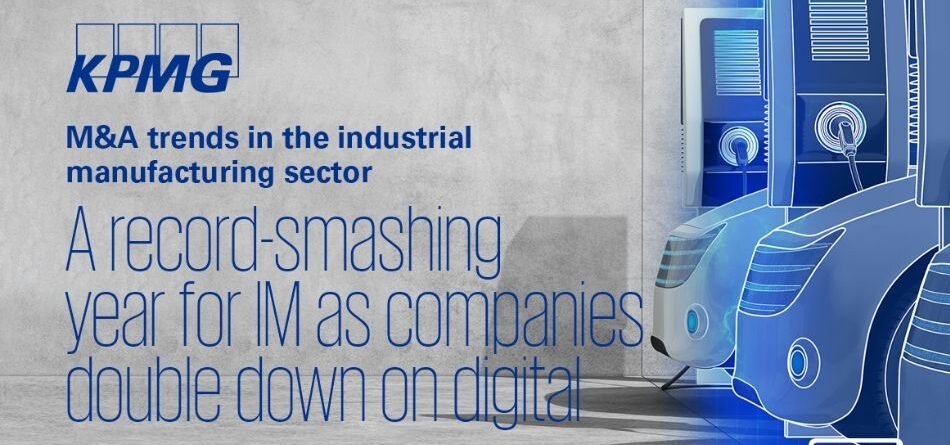










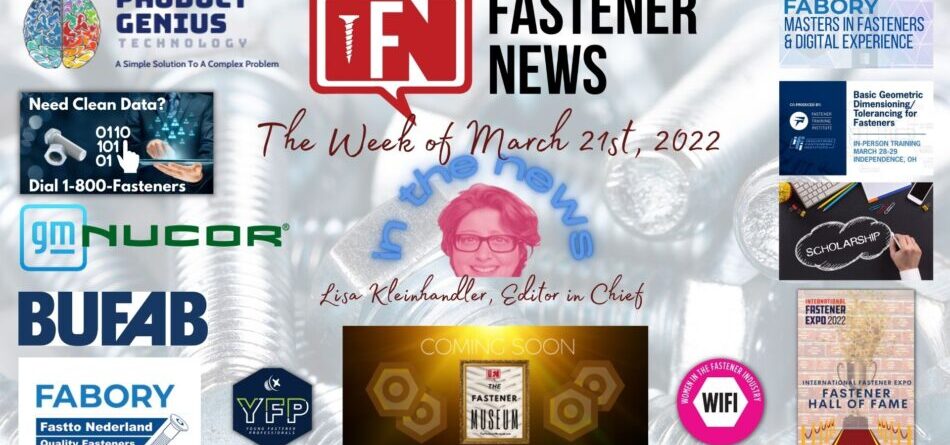








 Women in the Fastener Industry announced that The Margaret Davis Scholarship application is now open! WIFI honors the memory of Margaret Davis of ISSCO, INC & BTM Manufacturing with a scholarship to Fastener Fair USA in Detroit, MI May 17- 19th. Scholarship awardee will receive travel, accommodations, and entrance to the expo. Deadline for applications is April 1st, 2022. Apply now for a scholarship at
Women in the Fastener Industry announced that The Margaret Davis Scholarship application is now open! WIFI honors the memory of Margaret Davis of ISSCO, INC & BTM Manufacturing with a scholarship to Fastener Fair USA in Detroit, MI May 17- 19th. Scholarship awardee will receive travel, accommodations, and entrance to the expo. Deadline for applications is April 1st, 2022. Apply now for a scholarship at 
 The Gilchrist Foundation Scholarship application is open. The scholarship was established to provide financial assistance for college education for persons involved in the fasteners industry (or children of those employed in this industry). Robbie and Gina Gilchrist’s wishes are to give something back to an industry that provided so much to them. This perpetuating scholarship is the means by which to reward those who have the excitement and enthusiasm for the fastener industry experienced by Robbie and Gina. The Gilchrist Foundation will award one or more scholarships annually. For more info go to:
The Gilchrist Foundation Scholarship application is open. The scholarship was established to provide financial assistance for college education for persons involved in the fasteners industry (or children of those employed in this industry). Robbie and Gina Gilchrist’s wishes are to give something back to an industry that provided so much to them. This perpetuating scholarship is the means by which to reward those who have the excitement and enthusiasm for the fastener industry experienced by Robbie and Gina. The Gilchrist Foundation will award one or more scholarships annually. For more info go to: 

 for a NEW class from the Fastener Training Institute and the Industrial Fastener Institute: Basic Geometric Dimensioning & Tolerancing for Fasteners. Learn about datums, bonus tolerance, and the 14 different controlled geometric characteristics with real-world examples.
for a NEW class from the Fastener Training Institute and the Industrial Fastener Institute: Basic Geometric Dimensioning & Tolerancing for Fasteners. Learn about datums, bonus tolerance, and the 14 different controlled geometric characteristics with real-world examples. 




 2022 marks the 40th anniversary of the IFE Fastener Hall of Fame, which recognizes professionals who have made significant and enduring contributions to the industrial fastener industry on a national or global scale. As part of the annual International Fastener Expo, the Hall of Fame inductees are selected from names submitted by people like you. Now is the time to nominate someone you think has made a difference in the fastener industry, through leadership, innovation, or education. Are you ready to nominate a deserving colleague today? Nominate online at FastenerShows.com. Deadline to submit nominations is July 30th.
2022 marks the 40th anniversary of the IFE Fastener Hall of Fame, which recognizes professionals who have made significant and enduring contributions to the industrial fastener industry on a national or global scale. As part of the annual International Fastener Expo, the Hall of Fame inductees are selected from names submitted by people like you. Now is the time to nominate someone you think has made a difference in the fastener industry, through leadership, innovation, or education. Are you ready to nominate a deserving colleague today? Nominate online at FastenerShows.com. Deadline to submit nominations is July 30th.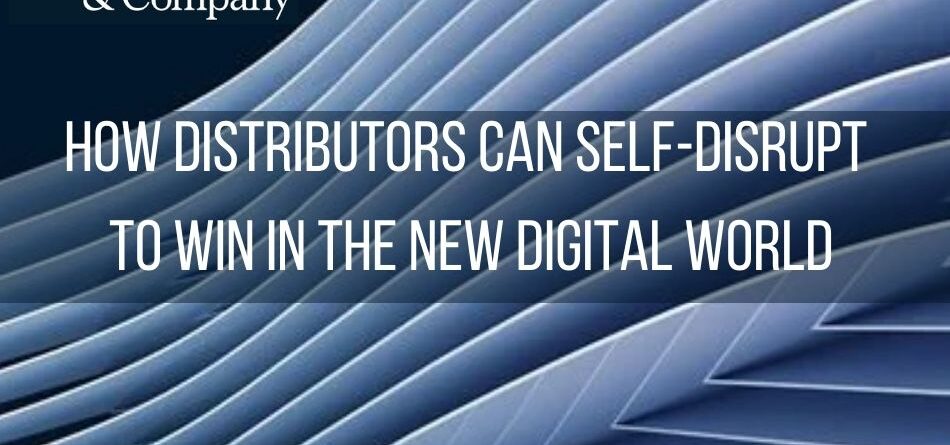

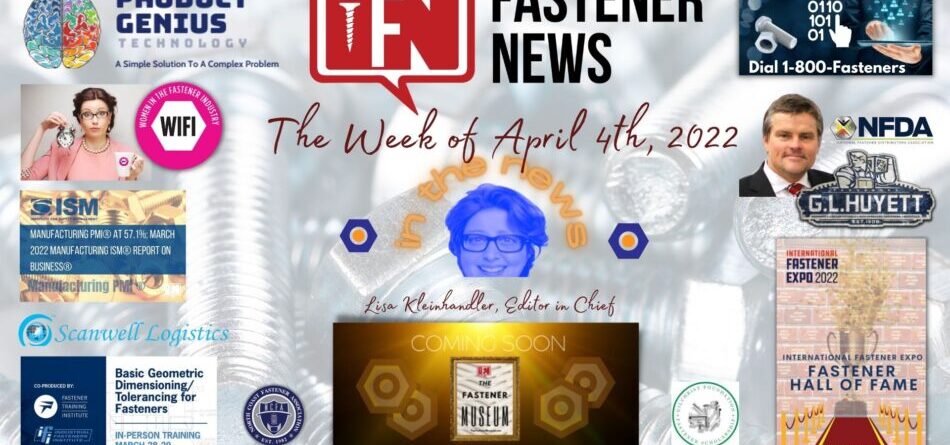
 This week’s episode of in the news is sponsored by Product Genius Technology. Enhance your website customer experience with the new view for industrial product search. Turn your sales team into product genius’s when selling complex product categories online.
This week’s episode of in the news is sponsored by Product Genius Technology. Enhance your website customer experience with the new view for industrial product search. Turn your sales team into product genius’s when selling complex product categories online.








